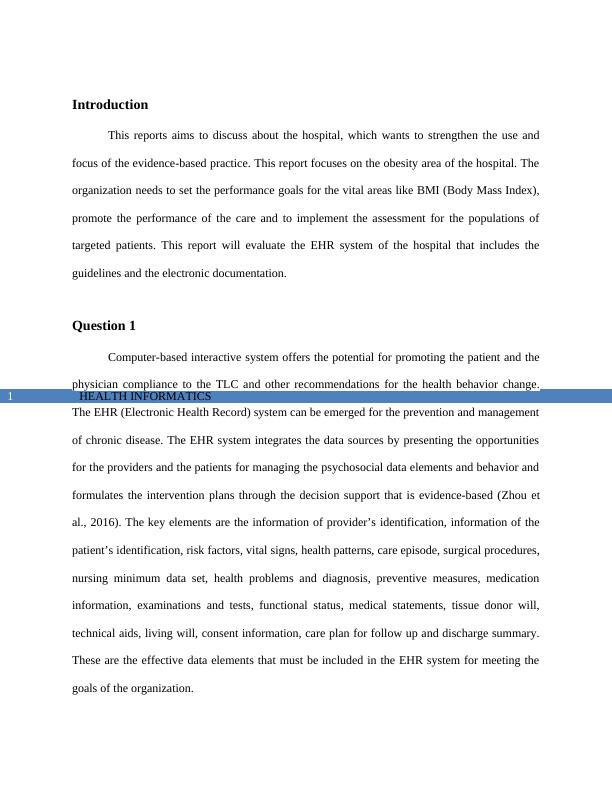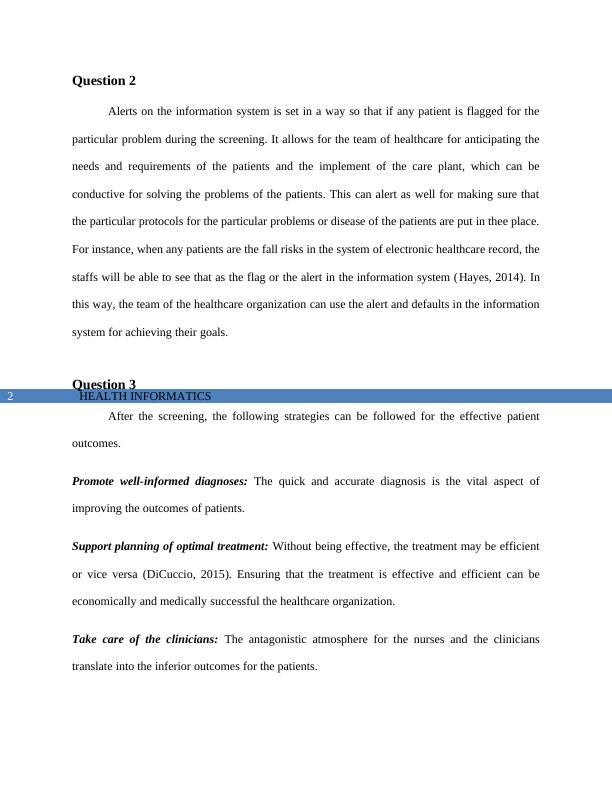Health Informatics of Hospital | EHR System
Added on 2022-08-12
About This Document
Case Study: How to use EHR in Evidence-Based Practice Instructions A large hospital wants to strengthen its focus and use of evidence-based practice. One area where it wants to focus is on obesity. Over the next two years, the organization must set performance objectives for critical areas such as body mass index (BMI), implement assessment for targeted patient populations, and promote care team performance. The hospital has an EHR in place which includes electronic documentation and guidelines. Answer each of the following questions: Identify what data elements should be included in the EHR to meet these goals. How might information system defaults and alerts be used to achieve these goals? Once screening has been improved, what are the next steps to improving patient outcomes? How could EHRs be designed to support these outcome-related goals? Submit your responses in a WORD document using APA formatting. Make sure to provide an introduction and conclusion to your case study.
Health Informatics of Hospital | EHR System
Added on 2022-08-12
End of preview
Want to access all the pages? Upload your documents or become a member.



